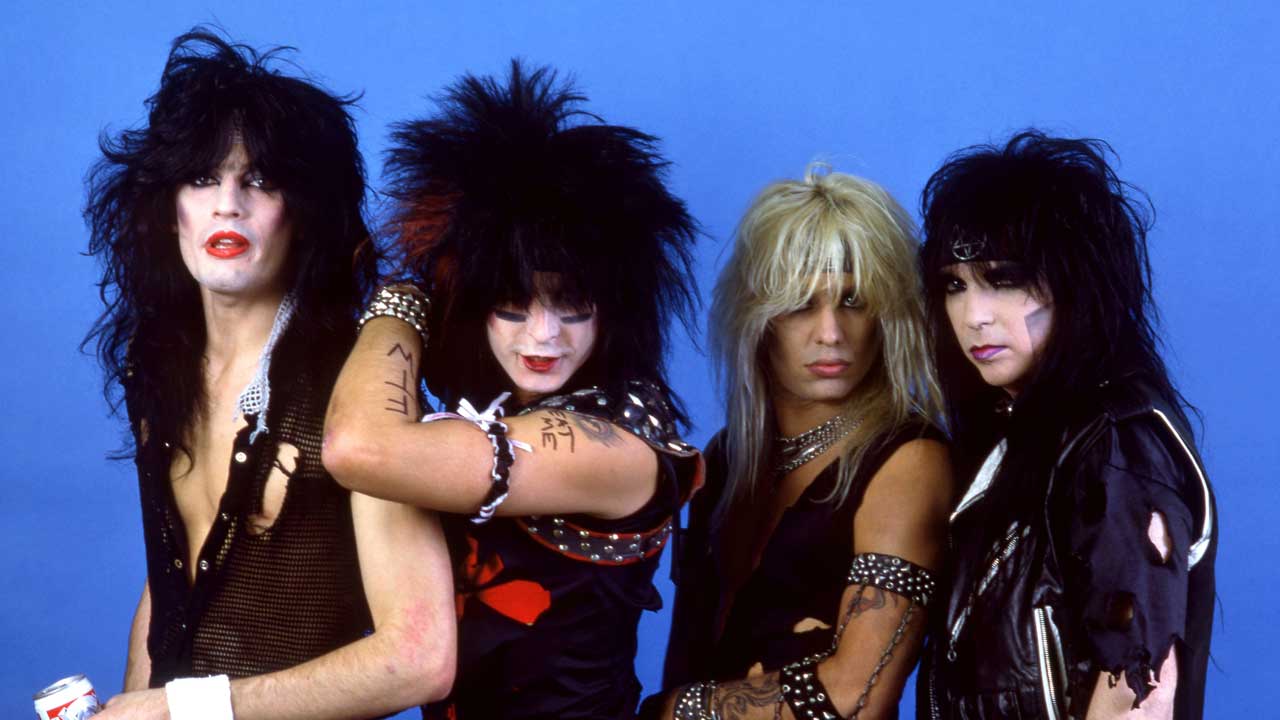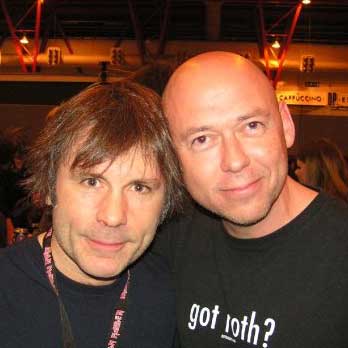Every Motley Crue album ranked from worst to best
Mötley Crüe left behind them a trail of destruction and nine albums – here ranked from worst to best

When Mötley Crüe undertook their farewell tour in 2015, the four members – bassist Nikki Sixx, singer Vince Neil, drummer Tommy Lee and guitarist Mick Mars – signed a contract which forbade them from ever reforming. And so, when they played their final show on New Year’s Eve 2015 in their hometown of Los Angeles, that was the end for the most notorious rock’n’roll band of them all.
Four years later, to no one's surprise, they were back touring the world's stadiums, citing a "loophole" that allowed the original agreement to be overridden if "all four band members agreed to do it." And so the notoriety continued, especially when the much-loved Mars was cast aside in favour of John 5.
Formed in 1981, Mötley Crüe were kings of the Hollywood hair metal scene and relished all the perks that came with that title. With an inexhaustible supply of booze, drugs and chicks, they partied so hard throughout the 80s it’s a miracle they all survived. Sixx almost croaked twice, overdosing on heroin in London, where a dealer dumped his apparently lifeless body in a skip, and in LA, where he was resuscitated with adrenaline shots, thus inspiring the anthem Kickstart My Heart.
In the end, the sole casualty of the Crüe’s wild years was a member of another band: Hanoi Rocks drummer Nicholas ‘Razzle’ Dingley, who died in the passenger seat of Vince Neil’s sports car after the singer crashed it during a booze and drugs bender in 1984. Neil escaped with a 15-day jail term and a $2.6m fine. Later, the Crüe would release a box set entitled Music To Crash Your Car To.
Incredibly, amid all the mayhem, Mötley Crüe became one of the biggest bands in the world, selling over 50 million albums. Their story has been described as “an epic tale of rock ‘n’ roll Babylon”, and its soundtrack expresses their hedonistic ethos to the full: music to drink, snort, screw, fight and crash cars to. Explicit content. Parental advisory.

9. Generation Swine (Elektra, 1997)
You can trust Louder
The Crüe’s last album for Elektra Records was a disaster. During the making of Generation Swine, Vince Neil was persuaded to rejoin the band in place of the guy who had replaced him, John Corabi. But the result was not the classic Crüe comeback fans hoped for. Instead, Generation Swine was a piss-poor alternative rock record that promptly died on its arse.
From the Marilyn Manson pastiche of Find Myself to the fake-punk title track, the Crüe sounded hopelessly out of touch. The only decent song, Afraid, comes on like a post-grunge Cheap Trick. The worst, Brandon, is a sappy orchestral ballad written and sung by Tommy Lee for his newborn son. Vince Neil has described this album as simply “terrible”. Tell us something we don’t know, dude.
8. New Tattoo (Mötley Records, 2000)
By the late 90s, Tommy Lee’s heart wasn’t in Mötley Crüe. After a spell in jail for assaulting ex-wife Pamela Anderson, Lee formed the rap-metal duo Methods Of Mayhem and the Crüe found a replacement in former Ozzy Osbourne drummer Randy Castillo.
Stung by the failure of Generation Swine, the band got back to their hard rock roots on New Tattoo, shrewdly enlisting Guns N’ Roses producer Mike Clink. Opener Hell On High Heels recalled the glory days of Girls, Girls, Girls, and the title track was their best ballad since Home Sweet Home. But with nu metal at its peak, New Tattoo sold just 200,000 copies. It was eight years before the Crüe released another new album.
7. Saints Of Los Angeles (Mötley Records, 2008)
Nikki Sixx was a little disingenuous when he said of the Crüe’s ninth studio album, “We try not to think too much.” For all its bonehead rock sensibilities, Saints Of Los Angeles was actually a concept album of sorts. It’s the legend of Mötley Crüe told via 13 ass-kicking tunes: The Dirt in album form. It was also the band’s best work in almost 20 years since Dr. Feelgood.
Warming to the theme of their own badass mythology, the Crüe recaptured their old swagger on self-aggrandizing anthems Down At The Whiskey and This Ain’t A Love Song (“…it’s just a fuck song”). On Saints Of Los Angeles, the Crüe effectively became their own tribute act. It was also the last album they ever made.
6. Mötley Crüe (Elektra, 1994)
Mötley Crüe without Vince Neil? This wasn’t what Elektra execs had in mind when they re-signed the band for $25m shortly before Vince walked – or was pushed, depending on who’s talking. With new frontman John Corabi (formerly of LA rockers The Scream, and now fronting The Dead Daisies), the Crüe attempted a bold reinvention, dressing down and making a grunge-influenced record.
But Nirvana fans didn’t buy it, and nor did many disgruntled Crüe fans. In America, the album sold just 500,000 copies: the preceding Dr. Feelgood had shifted five million. There’s some good stuff on Mötley Crüe. Boisterous single Hooligan’s Holiday and the atmospheric Misunderstood are strong modern rock songs. Corabi was a better singer than Vince. But within three years, The Dude was back.
5. Theatre Of Pain (Elektra, 1985)
As they proved with the title Music To Crash Your Car To, Mötley Crüe don’t ‘do’ remorse. But in the immediate aftermath of Razzle’s death, they dedicated this third album to his memory. They also softened up just a little. Their image was more glam, and they cut their first ballad, Home Sweet Home, with a plink-plonk piano melody played by, of all people, Tommy Lee.
A lighters-aloft live favourite with a classic on-the-road video heavily rotated by MTV, Home Sweet Home pushed Theatre Of Pain to multi-platinum status after a goofy cover of Brownsville Station’s Smokin’ In The Boys Room had heralded the Crüe’s return. Razzle was dead, Hanoi Rocks split, but the Crüe just rolled on.
4. Too Fast For Love (Elektra, 1982)
Originally issued via the band’s own label Leathur Records in 1981, the Crüe’s debut was remixed by Queen producer Roy Thomas Baker for its international major label release a year later. But no amount of polish could smooth off is rough edges, and the band’s barely competent performance is an integral part of the album’s tacky appeal.
Nikki Sixx is an avowed fan of British glam rock legends Slade and The Sweet, and those influences are in evidence on Too Fast For Love, especially in the terrace-style chants of the title track. But the Crüe also had a cutting edge: a raw, coke-fuelled bovver-boy aggression, felt in the supercharged cowbell-clunking yob-rock of Live Wire. Plainly, these dudes had balls.
3. Dr. Feelgood (Elektra, 1989)
Mötley Crüe never needed an excuse for a party, but when their fifth album topped the US chart – the only Crüe album to do so – it was the sweetest of victories. Having seen LA rivals Guns N’ Roses attain world domination, the Crüe served notice with Dr. Feelgood that they were still major players.
The album’s title track, another frankly hypocritical warning on the perils of drug abuse, had a crunching riff so woofer-warpingly bottom-heavy that an envious Metallica subsequently enlisted producer Bob Rock for The Black Album. And while the other standout track, the turbo-powered Kickstart My Heart, also had a drug-related title, its lyrics posted a defiant message to all-comers, with Vince boasting, “We’re still kickin’ ass!”
2. Girls, Girls, Girls (Elektra, 1987)
By 1987, a second wave of big-haired LA bands were snapping at Motley Crüe’s cowboy-booted heels, including Poison and, most threatening of all, Guns N’ Roses. But the Crüe were still the swinging dicks of the LA scene, and Girls, Girls, Girls, the title track from their fourth album, celebrated the high life: a homage to the band’s favourite strip clubs, featuring revving Harleys and chick-baiting banter between Vince and wolf-whistling Tommy.
The album was an arena-rock juggernaut, hitting number two on the US chart. But amid the big riffs and choruses, Nikki Sixx’s lyrics carried a sinister edge: Wild Side a bulletin from LA’s meanest streets, Dancing On Glass a morbid account of the author’s heroin addiction.
1. Shout At The Devil (Elektra, 1983)
The Crüe’s second album, their platinum-selling breakthrough, was an all-out attack on America’s self-appointed moral majority. With its faux-Satanic imagery, a mischievous warning of “masked backwards messages” and a knowingly controversial cover of The Beatles’ Helter Skelter (a song inextricably linked to the 1969 Manson Family murders), Shout At The Devil was an affront to decency.
It was also, fundamentally, a great heavy metal record, stacked with gonzoid anthems: Looks That Kill, Too Young To Fall In Love and the fists-in-the-air title track. The Crüe’s alien-hooker chic – skyscraper hair, crude make-up, S&M leather outfits – spawned a legion of copycat chicks-with-dicks on the Sunset Strip. Equally, Shout At The Devil remains the definitive ‘80s glam metal album, and Mötley’s masterpiece.
Sign up below to get the latest from Classic Rock, plus exclusive special offers, direct to your inbox!
Freelance writer for Classic Rock since 2005, Paul Elliott has worked for leading music titles since 1985, including Sounds, Kerrang!, MOJO and Q. He is the author of several books including the first biography of Guns N’ Roses and the autobiography of bodyguard-to-the-stars Danny Francis. He has written liner notes for classic album reissues by artists such as Def Leppard, Thin Lizzy and Kiss, and currently works as content editor for Total Guitar. He lives in Bath - of which David Coverdale recently said: “How very Roman of you!”









